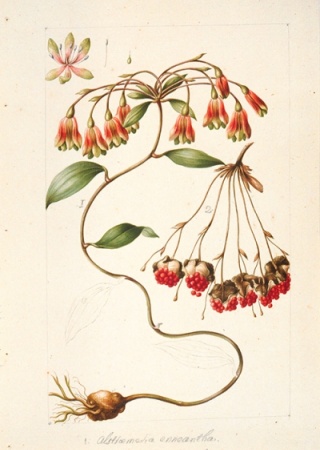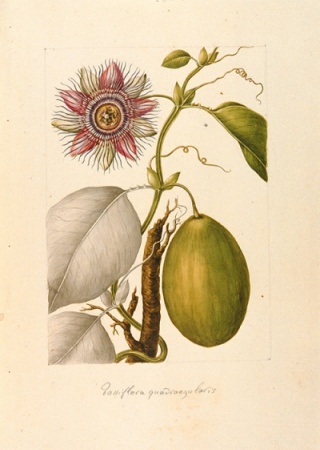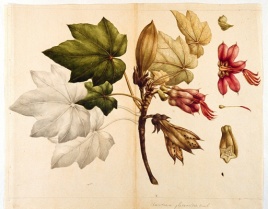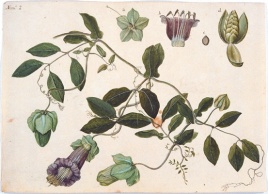José Mociño
- ... New Spain was the name given to the regions under Spanish rule up until the 19th century? At its height, this included what is now the western United States, Florida, Mexico, Guatemala, the Philippine Islands, and more.
- … after Martin Sessé y Lacasta’s death, Mociño was appointed head of the remaining expedition work?
- ... while in exile, Mociño spent time in Montpelier with Swiss botanist Agustin Pyramus de Condelle? Condelle hired artists for several weeks to copy the collection of illustrations Mociño carried with him.
- ... after the disappearance of the original illustrations, the Condelle copies were the only illustrated evidence of the expedition's findings for over 150 years? The illustrations Mociño cared for wouldn’t reappear until 1981.
- … Mociño helped battle an epidemic of yellow fever in the Andalucia region of Spain in 1804?
- … he often battled the “old ways” of medicine, rejecting ideas such as bloodletting, which usually left patients worse off?
- … Plantae Novae Hispanae wouldn’t be published until nearly a century after it was written and decades after Mociño's death?
- 1757 – September 24 – Born in Temascaltepec, New Spain (Mexico) to Spanish parents
- 1778 – Graduates with a degree in theology and ethics, but decides not to become a clergyman after falling in love with Maria Rita Rivera y Melo Montaño
- 1784 – Leaves his wife and returns to Mexico City to study medicine
- 1790 – Joins the third excursion of the Royal Botanical Expedition to New Spain
- 1791 – Discharged by Carlos IV, who succeeded his father as king of Spain
- 1791 – Ordered to join Juan Francisco de la Bodega y Quadra’s expedition to survey the northwestern region of Spain’s territories, which is now referred to as the Pacific Northwest
- 1793 – Completes Noticias de Nutka, a twelve-part report of his time at Nootka Sound
- 1793 – November – Reappointed to the Royal Expedition
- 1799 – Returns to Mexico City to organize his notes and collection with Martin de Sessé y Lacasta
- 1803 – Travels to Spain to deliver expedition findings
- 1812 – Exiled to France
- 1820 – May 19 – Dies, three years after returning to Spain from exile
Although Martin de Sessé y Lacasta was the director of the Royal Botanical Expedition to New Spain, it is often referred to as the Sesse and Mociño Expedition, thanks in great part to the extensive work Mexican José Mociño did as part of the group. Originally geared to become a priest, Mociño would marry instead, and eventually leave his wife and small town to study natural science and medicine in Mexico City. It was during these studies that he caught the eye of Sessé and was invited to join the expedition’s third excursion. However, their work would not see the public light during their lifetimes. Political turmoil, in part due to the Napoleonic wars in Spain, would result in Mociño’s imprisonment and eventual exile. Although he would eventually return to Spain, the trials of Mociño and the rest of the Royal Botanical Expedition to New Spain are an example of how outside forces can affect scientific pursuits.




